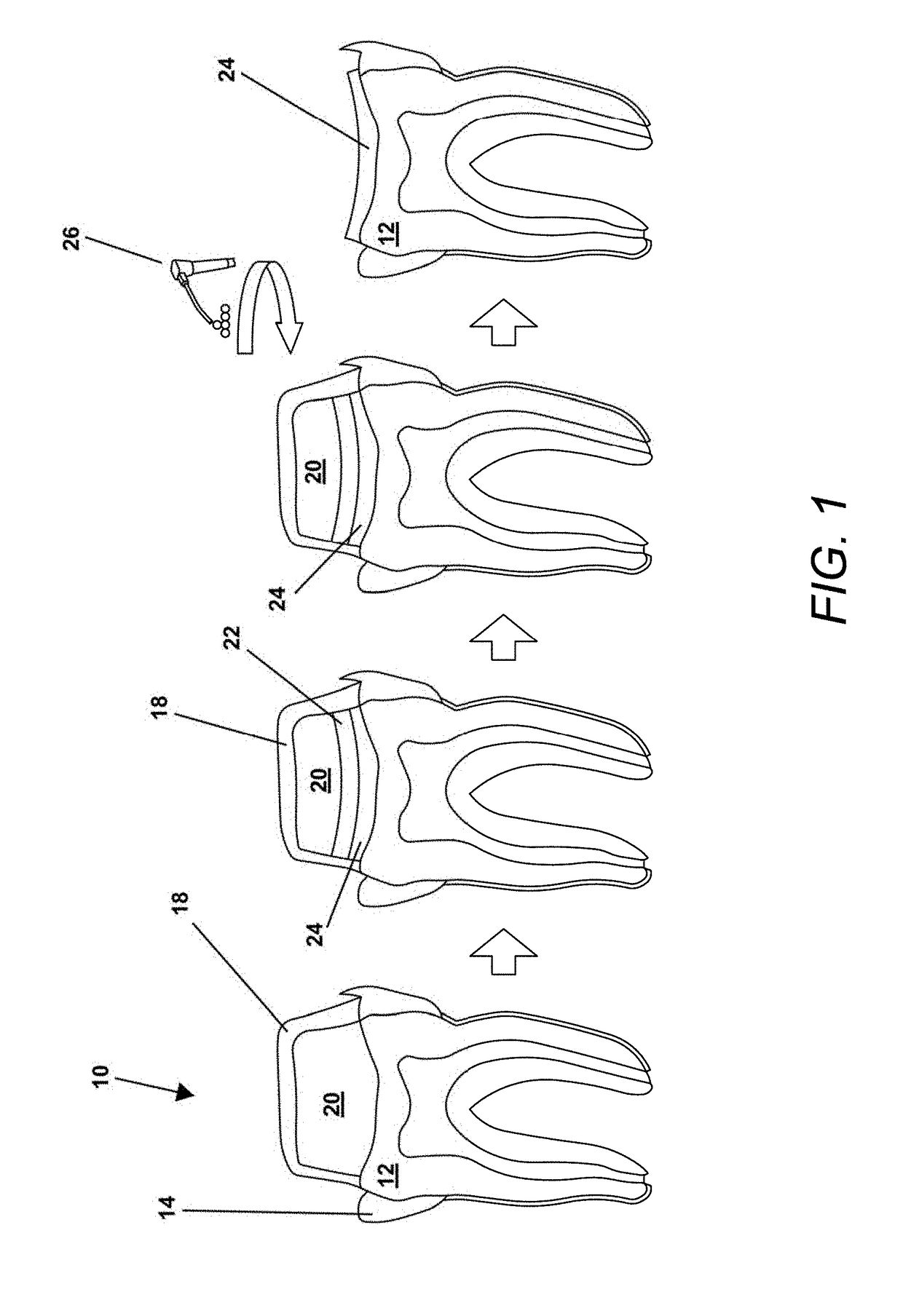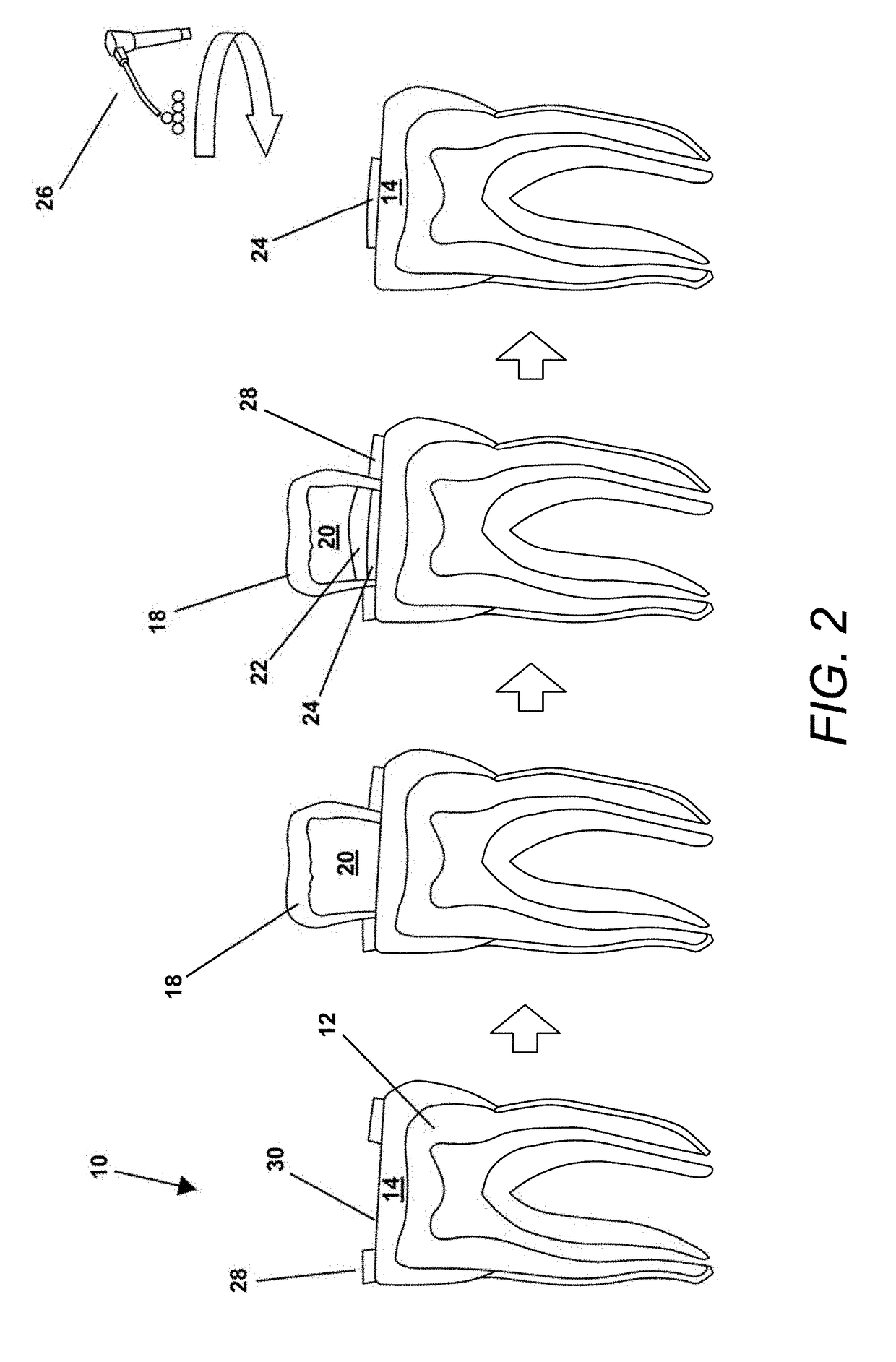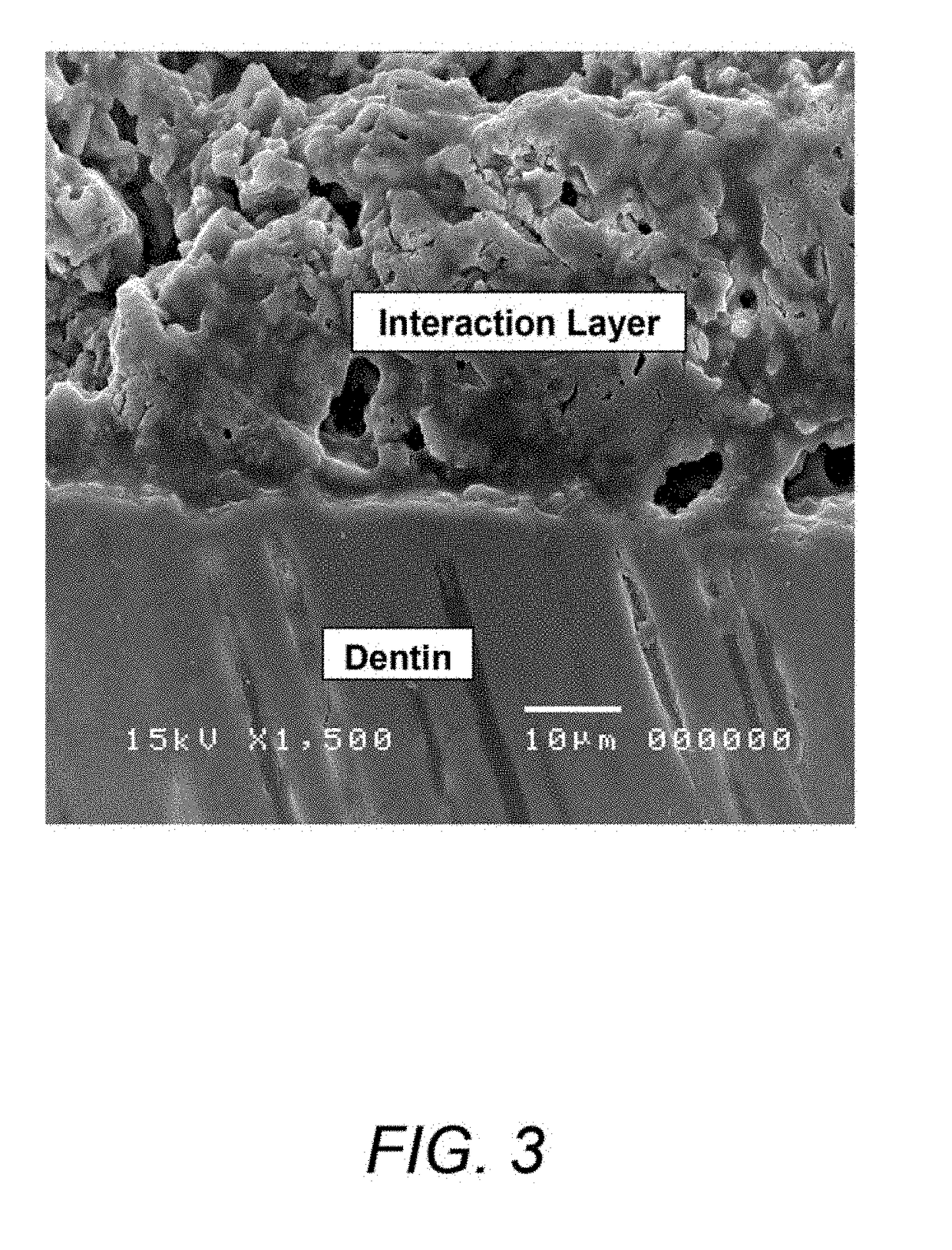Borate bioactive glass and methods of use for dentin and enamel restoration
a bioactive glass and dentin technology, applied in the field of borate bioactive glass, can solve the problems of dentin hypersensitivity treatment, major problems faced by dentists, sharp pain,
- Summary
- Abstract
- Description
- Claims
- Application Information
AI Technical Summary
Benefits of technology
Problems solved by technology
Method used
Image
Examples
example 2
Detain Samples
[0128]Freshly extracted non-carious third molars were used. The teeth were sectioned to obtain their buccal surfaces, which were then ground flat to expose dentin surfaces at the cervical region. All the dentin surfaces were ultrasonicated in deionized water for 30 s, then etched in 0.5 M EDTA (pH 7.4) for 2 min and rinsed with water spray for 30 s. See Paes Leme AF, et al., J Dent Res, 83, 71 (2004)—incorporated herein by reference in its entirety.
Enamel Samples
[0129]Third molars were used. The teeth were sectioned to remove their buccal surfaces using a water-cooled diamond saw microtome (1600 Microtome, Leitzwetzlar, Germany) and then ground flat with water-cooled silicon carbide discs (600-and 1200-grade papers; Buehler), and wet-polished using diamond paste to obtain flat enamel surfaces. Two layers of protective nail varnish were applied to protect half of the exposed enamel area, while leaving a treatment enamel window having an area of 2 mm2. ...
example 3
Borate Bioactive Glass Paste Application
[0130]50 wt % phosphoric acid was prepared by the dilution of 85 wt % phosphoric acid (Wako Chemicals, Osaka, Japan) in distilled water. One-tenth of a gram of the borate glass particles was mixed with 0.2 mL 50 wt % phosphoric acid to form a gel with a pH of 2. The acidic paste (i.e. borate bioactive glass paste) was immediately applied to the dentin surfaces of group III and IV specimens by microbrush (Microbrush International, Grafton, Wis., USA). A layer of bonding agent (Clearfil SE Bond, Kuraray-Medical, Tokyo, Japan) was immediately applied over the borate glass-phosphoric-acid gel and then light-cured.
[0131]After storage in artificial saliva for 24 h, the thin layer of the bonding agent was gently removed by means of an excavator, and then rinsed with water spray for 30 s.
example 4
FE-SEM / EDS Interface Examination
[0132]The specimens were stored in de-ionized water for 24 h, and then sectioned perpendicularly to the interface to produce 1.5 mm-thick slabs. The cut surfaces were polished, etched, gold-coated, and then examined by FE-SEM / EDS (S-4500, Hitachi, Hitachinaka, Japan). See Bakry A S, et al., J Adhes Dent., 9, 513 (2007)—incorporated herein by reference in its entirety. Line scans were done across the treated dentinal surfaces with an EDS attachment for the following elements: phosphate, calcium, and silicon. FIGS. 3 and 4A show these FE-SEM images of the deposited calcium phosphate “interaction layer” on the dentin surface of a specimen. FIG. 4B furthermore shows an EDS line scan of phosphate, calcium, and silica corresponding with the dotted line in the FE-SEM image of FIG. 4A. The EDS line scan shows that the interaction layer and the dentin contain similar amounts of calcium phosphate, while both contain negligible amounts of silica.
PUM
| Property | Measurement | Unit |
|---|---|---|
| diameters | aaaaa | aaaaa |
| viscosity | aaaaa | aaaaa |
| temperature | aaaaa | aaaaa |
Abstract
Description
Claims
Application Information
 Login to View More
Login to View More - R&D
- Intellectual Property
- Life Sciences
- Materials
- Tech Scout
- Unparalleled Data Quality
- Higher Quality Content
- 60% Fewer Hallucinations
Browse by: Latest US Patents, China's latest patents, Technical Efficacy Thesaurus, Application Domain, Technology Topic, Popular Technical Reports.
© 2025 PatSnap. All rights reserved.Legal|Privacy policy|Modern Slavery Act Transparency Statement|Sitemap|About US| Contact US: help@patsnap.com



